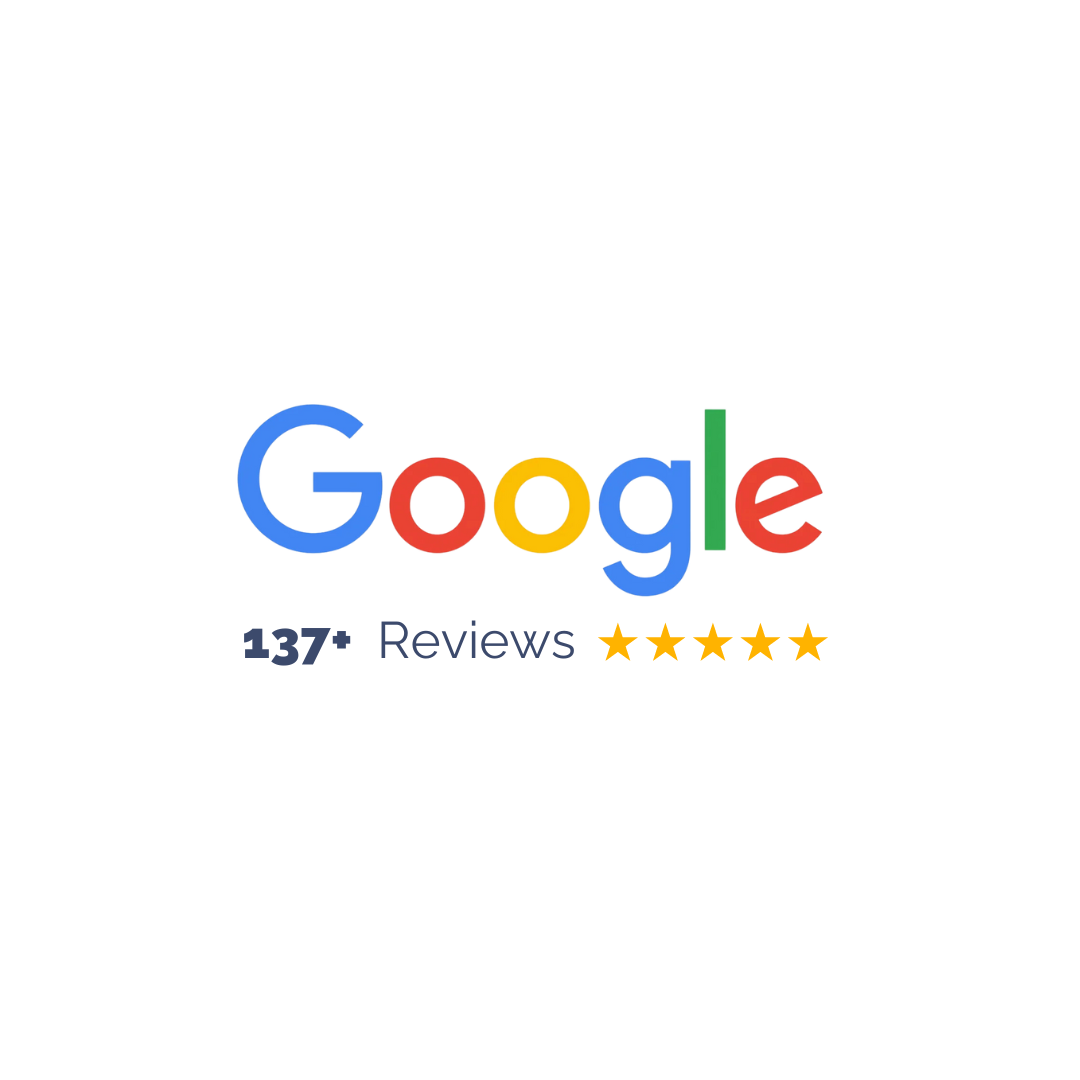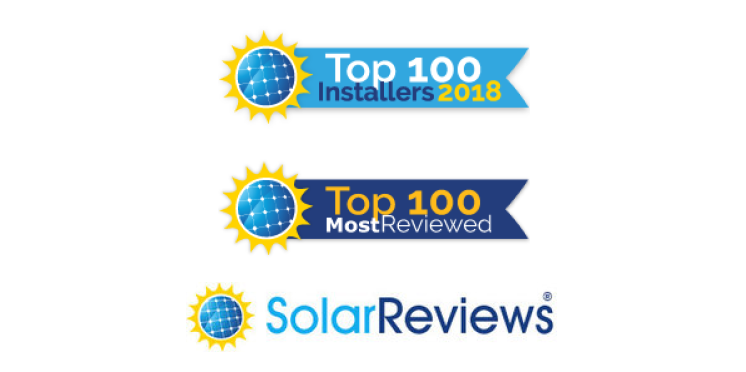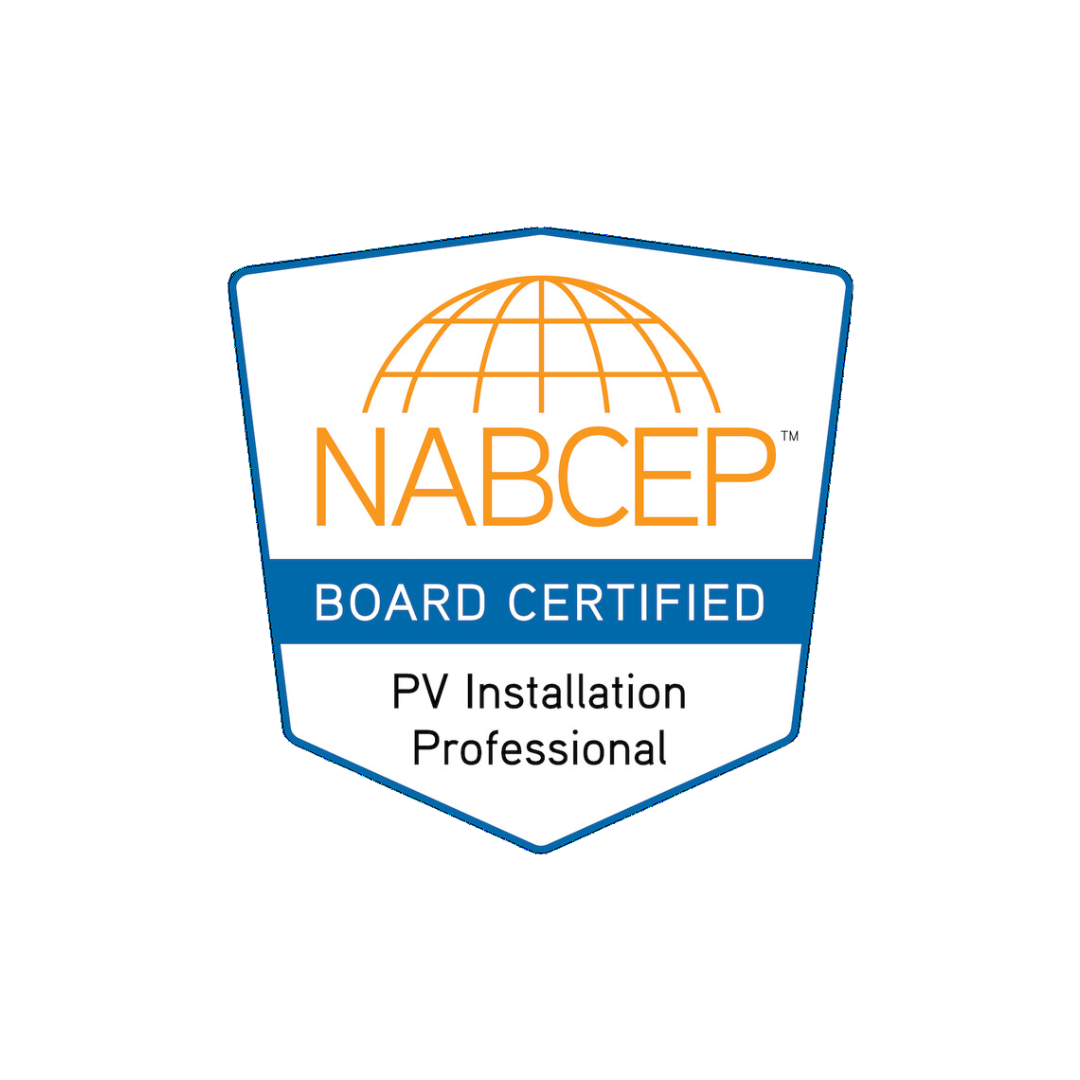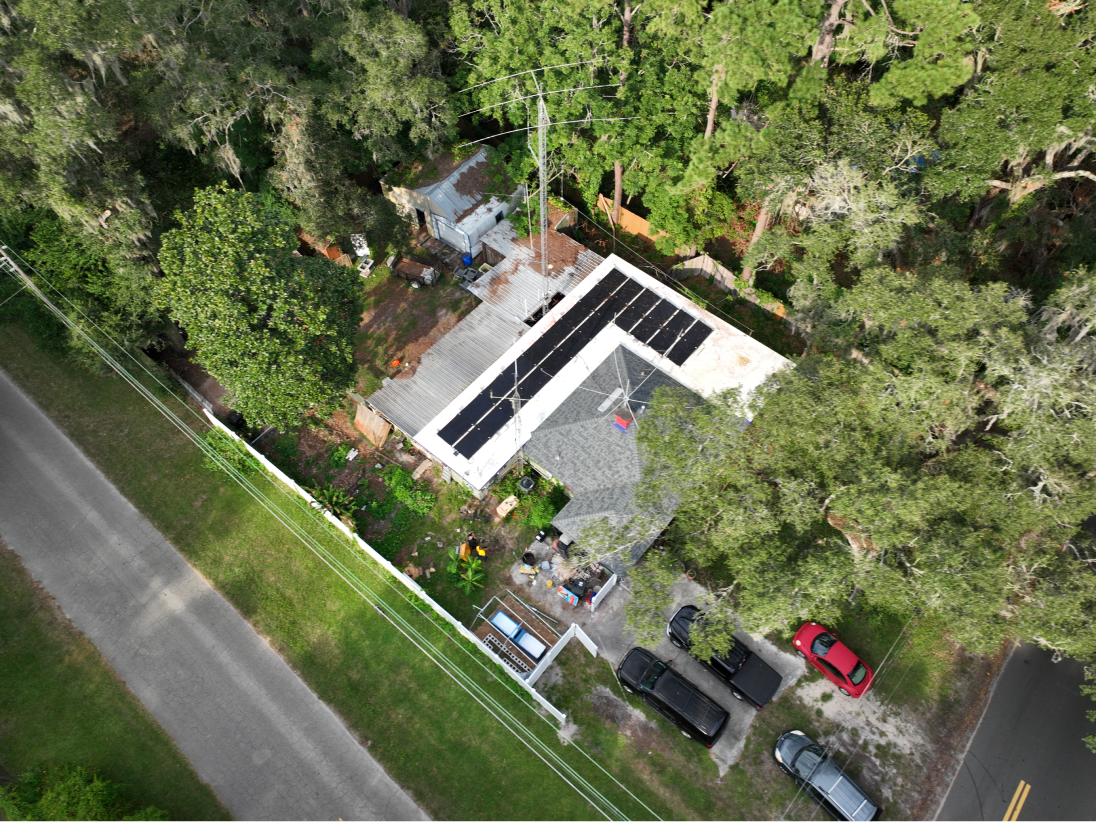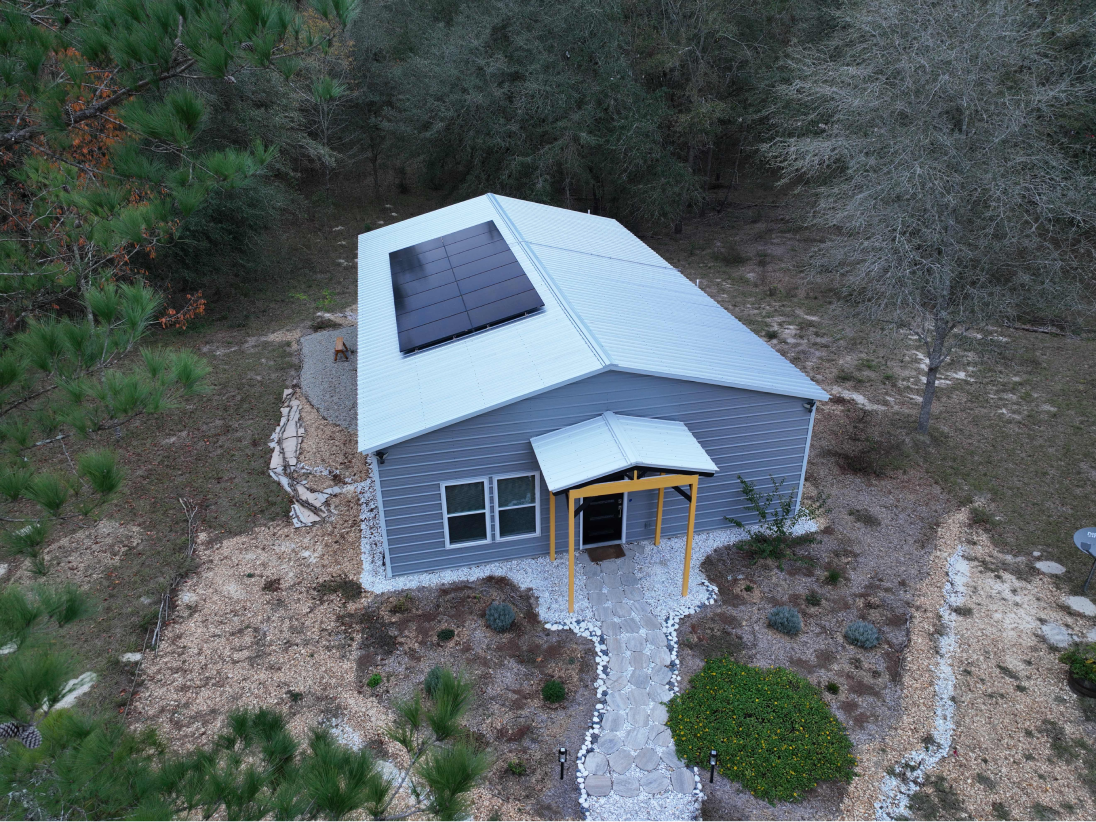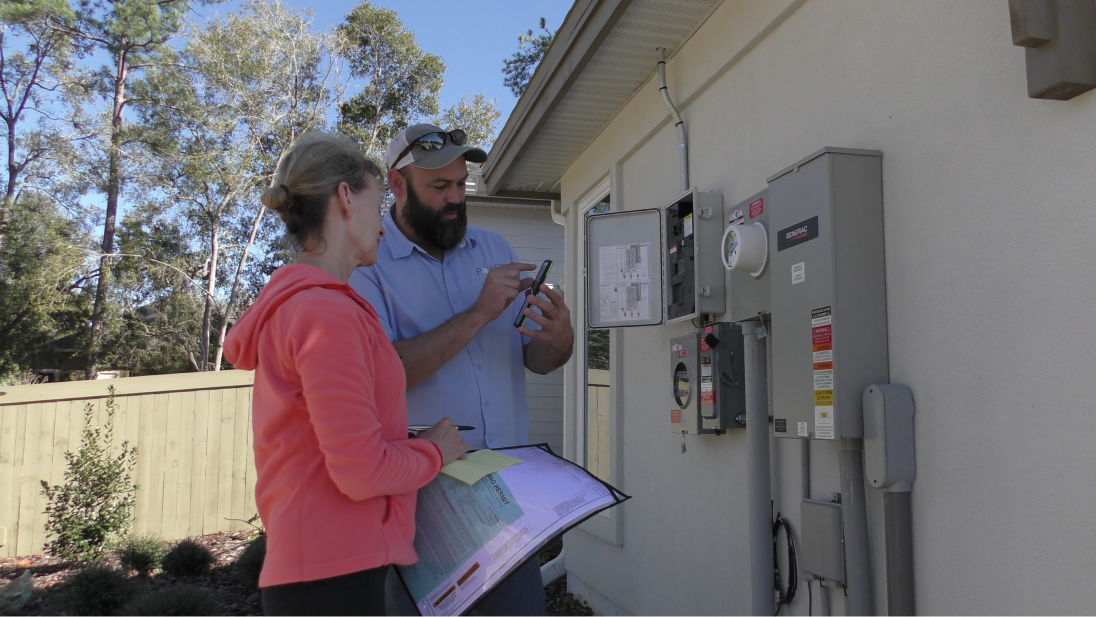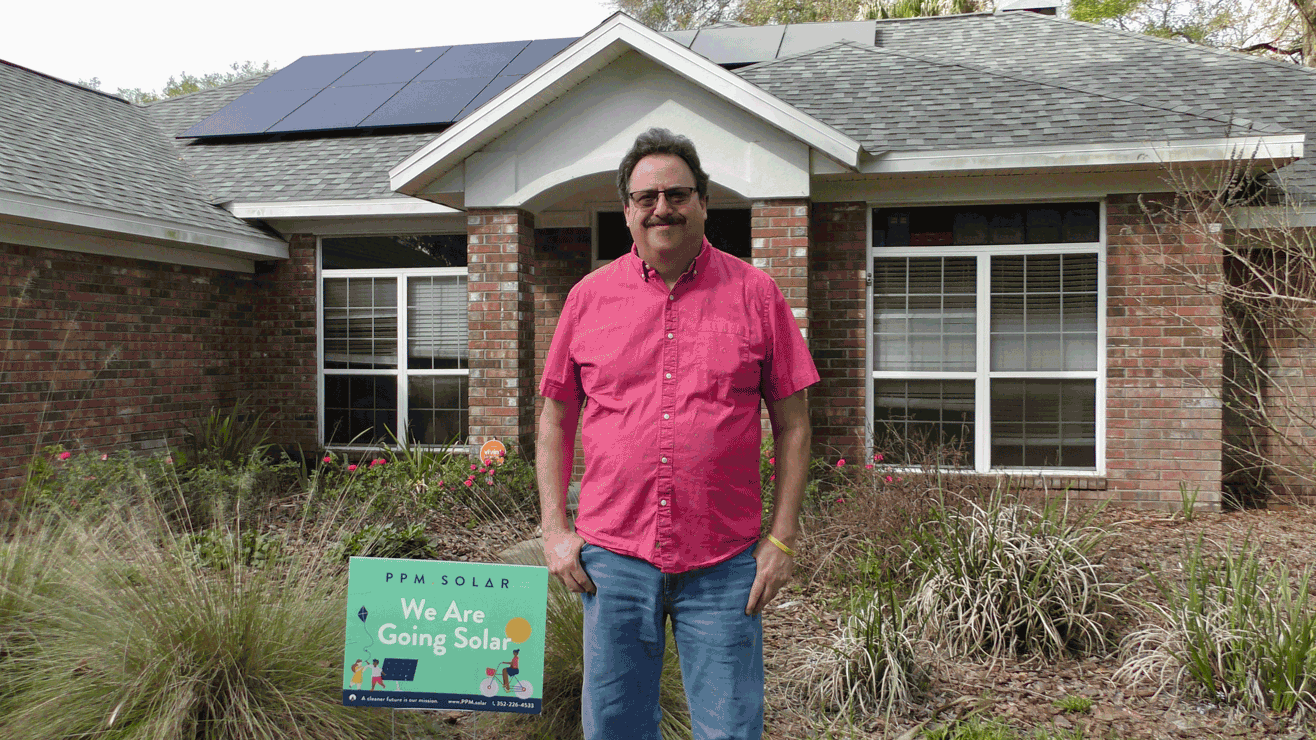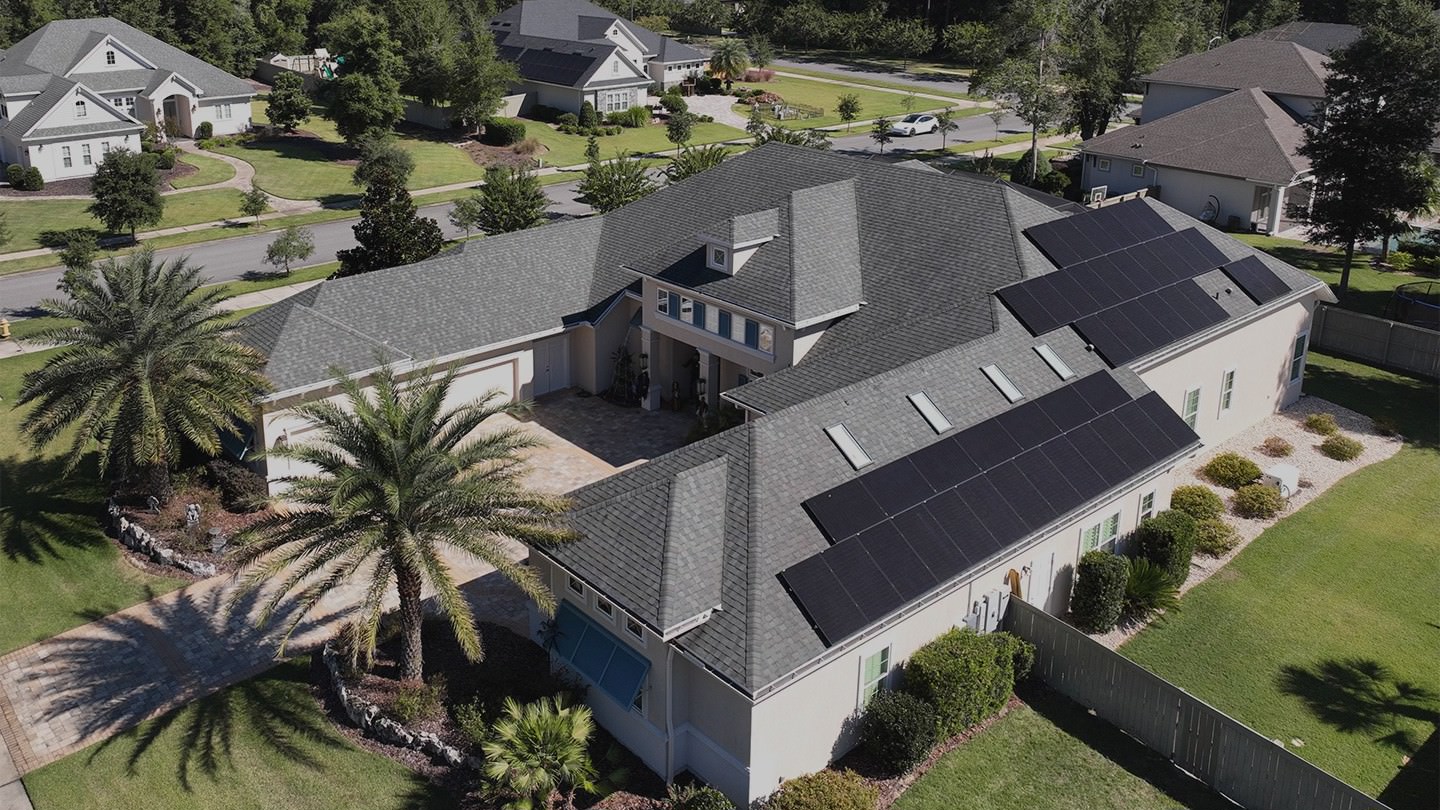
PPM Solar is the top solar energy installer in Gainesville
Why more homeowners choose PPM to install their solar panels
PPM was recognized three times as the world’s fastest-growing UF alumni-led business. At PPM Solar, we understand the value of collective effort and are proud of our team. This team has created an impact right here at home that cannot go unnoticed, resulting in multiple local awards, including the nomination for the Business of the Year by the Gainesville Chamber of Commerce in 2022.
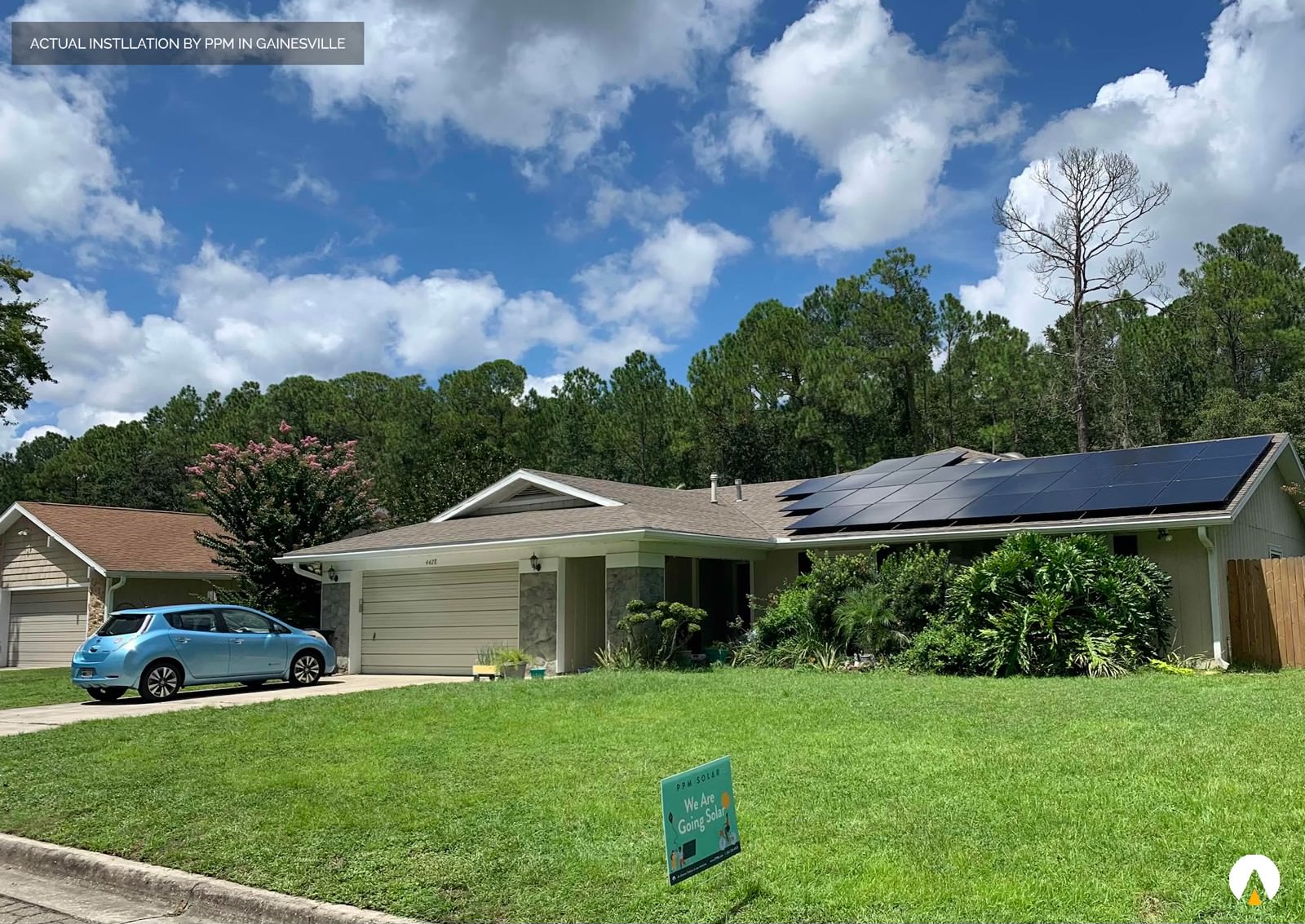
3 simple steps to installation



2024 – a year of solar in Gainesville!
With the highest-ever federal solar tax credit now extended, and the cost of solar installation at an all-time low, there’s no better time than now to switch to solar energy in Gainesville. Gainesville has a significant history with solar energy, rooted deeply in the community. Notably, in 2011, a feed-in tariff policy led to an explosion of solar installations, earning Gainesville the highest solar per capita rate in the United States, surpassing California. Gainesville also commands an excellent solar resource, providing for 4 average daily peak hours of sun per day, making it one of the best places in the country to go solar.
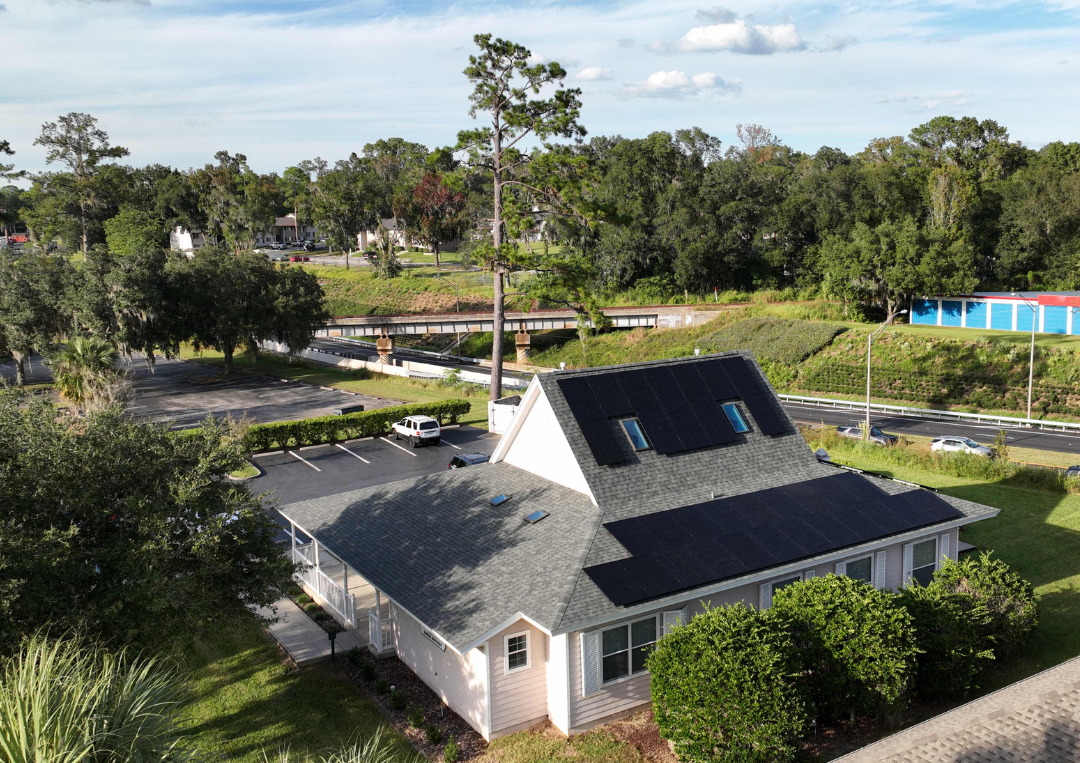
Start saving with solar energy. Contact us now for a free, personalized quote!
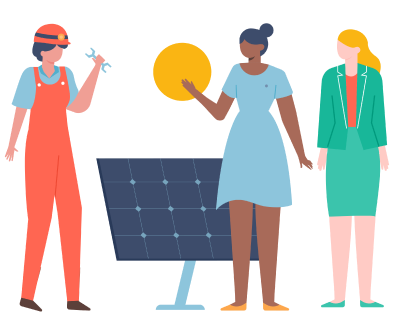
Which brands are most optimal for Gainesville solar installations?
In Gainesville, considerations often include mitigating partial shading, accommodating multiple roof surfaces, and at times, requiring highly efficient solar modules to maximize capacity on the most suitable roofs.
PPM’s team has been trained and certified with a range of industry-leading companies, such as Tesla, SMA, Enphase, Tigo, and Fronius for inverters and storage; REC Solar, VSUN, QCell, LG, and Canadian Solar for modules; and Snap-n-Rack, Ironridge, Aerocompact, and Nuance for mounting structures. This comprehensive expertise allows PPM Solar to deliver the most value to every client.

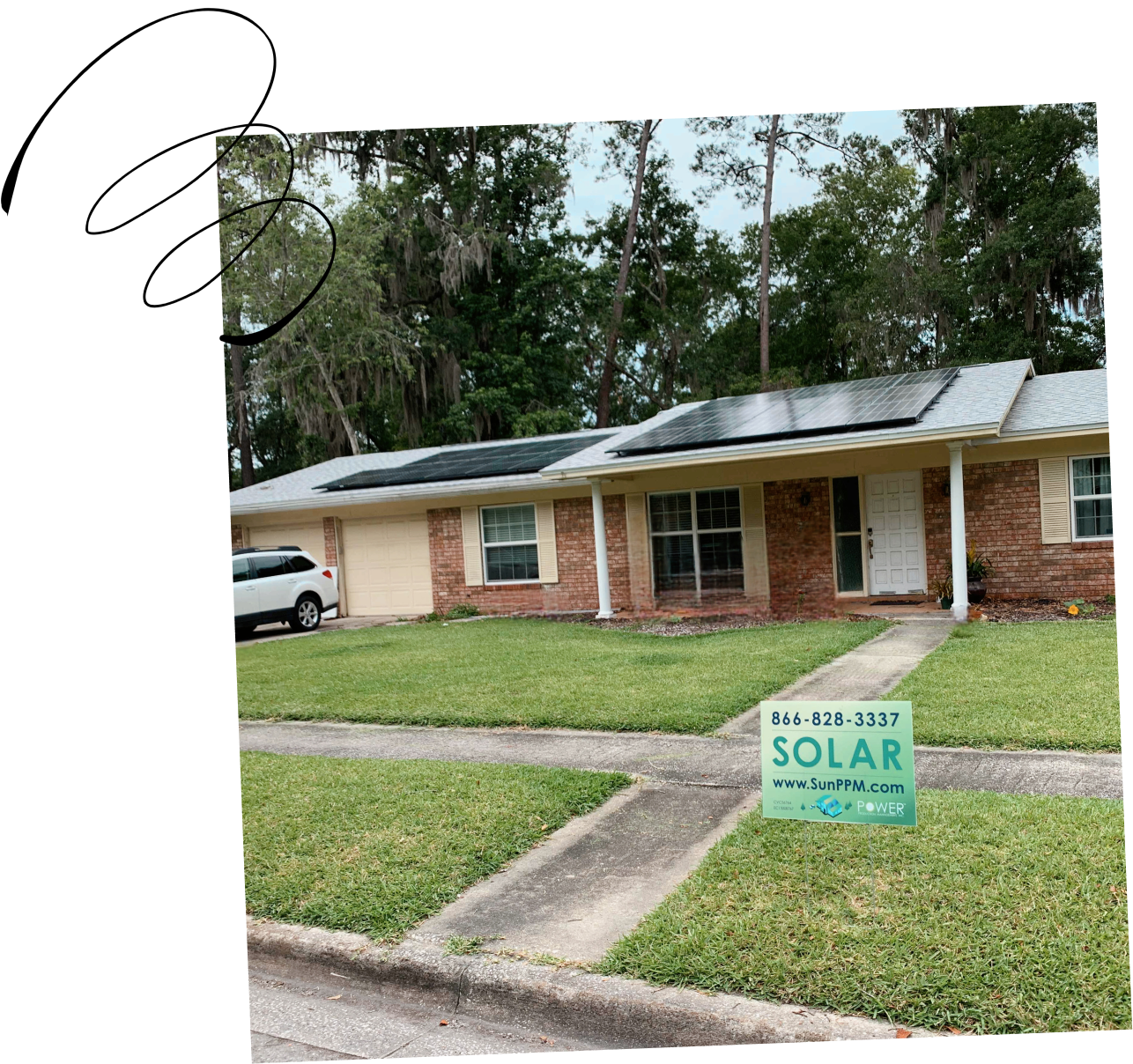
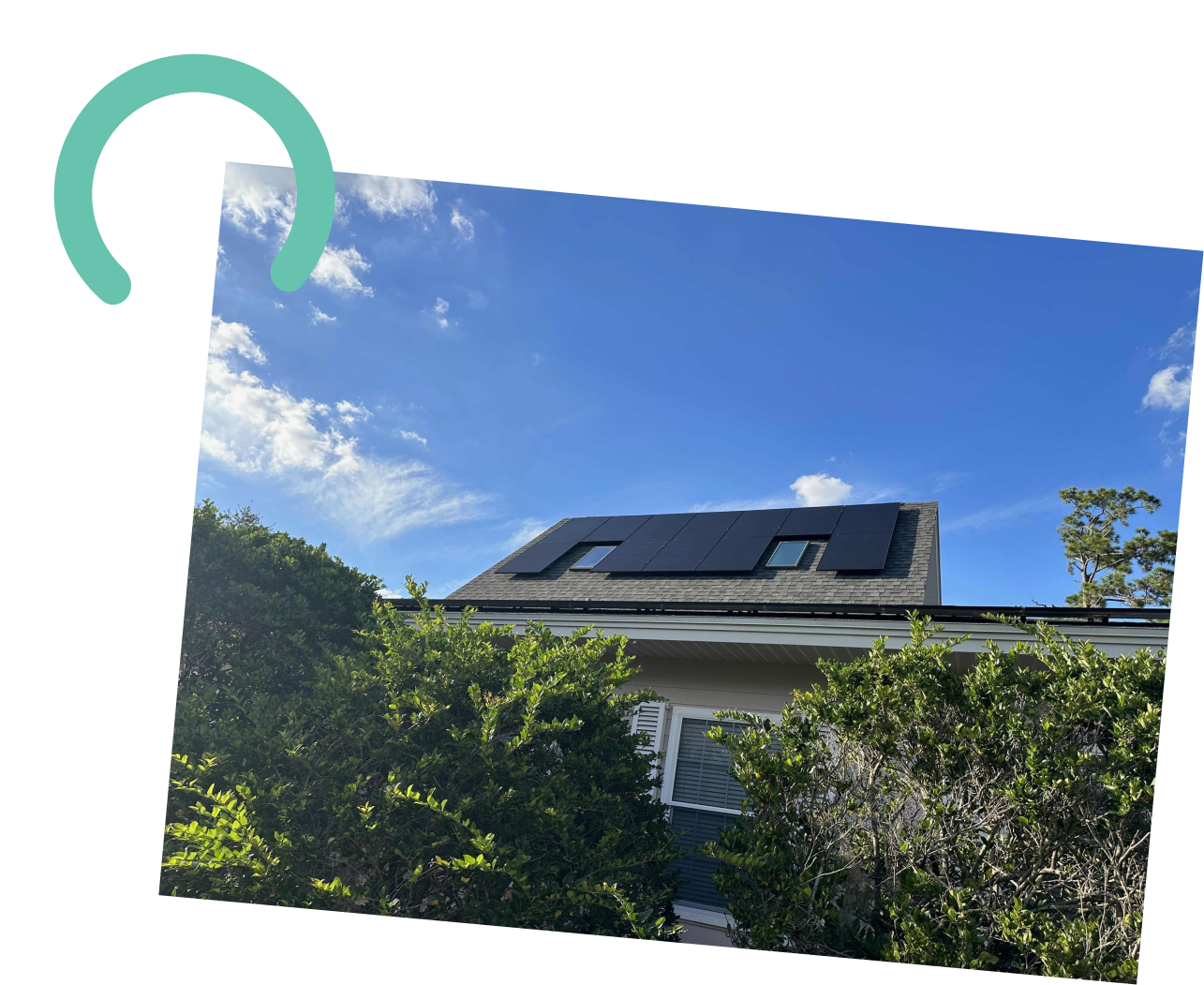
Which solar financing options are available for Gainesville homeowners?
The sales and Finance process has been somewhat problematic in the solar industry. Unfortunately, Predatory sales organizations, redlining, overpriced financing, telemarketing, and doorknocking have become very common. Transparency is in our DNA. We offer fair and transparent pricing from a unified pricelist that we adjust occasionally to ensure that we remain competitive while assuring business continuity and growth.
At PPM Solar, our cash price is our financed price. We don’t bake hidden fees or interest buydown payments into the project’s cost. We offer every client the same price based on their site conditions. Every client gets the same price based on their site conditions. We will only quote what’s needed and never upsell. We have in-house solar sales consultants who have worked here for many years.
Furthermore, we have been vetted and built relationships with banks and credit unions that share this philosophy and deliver fairly priced financing products to our clients. We believe solar energy should not be an additional expense and that solar energy financing payments should be low and competitive with the existing utility bill.
Additionally, a 30% Federal Tax Credit is available for those who qualify and can further accelerate the ROI while lowering the initial solar panel cost.
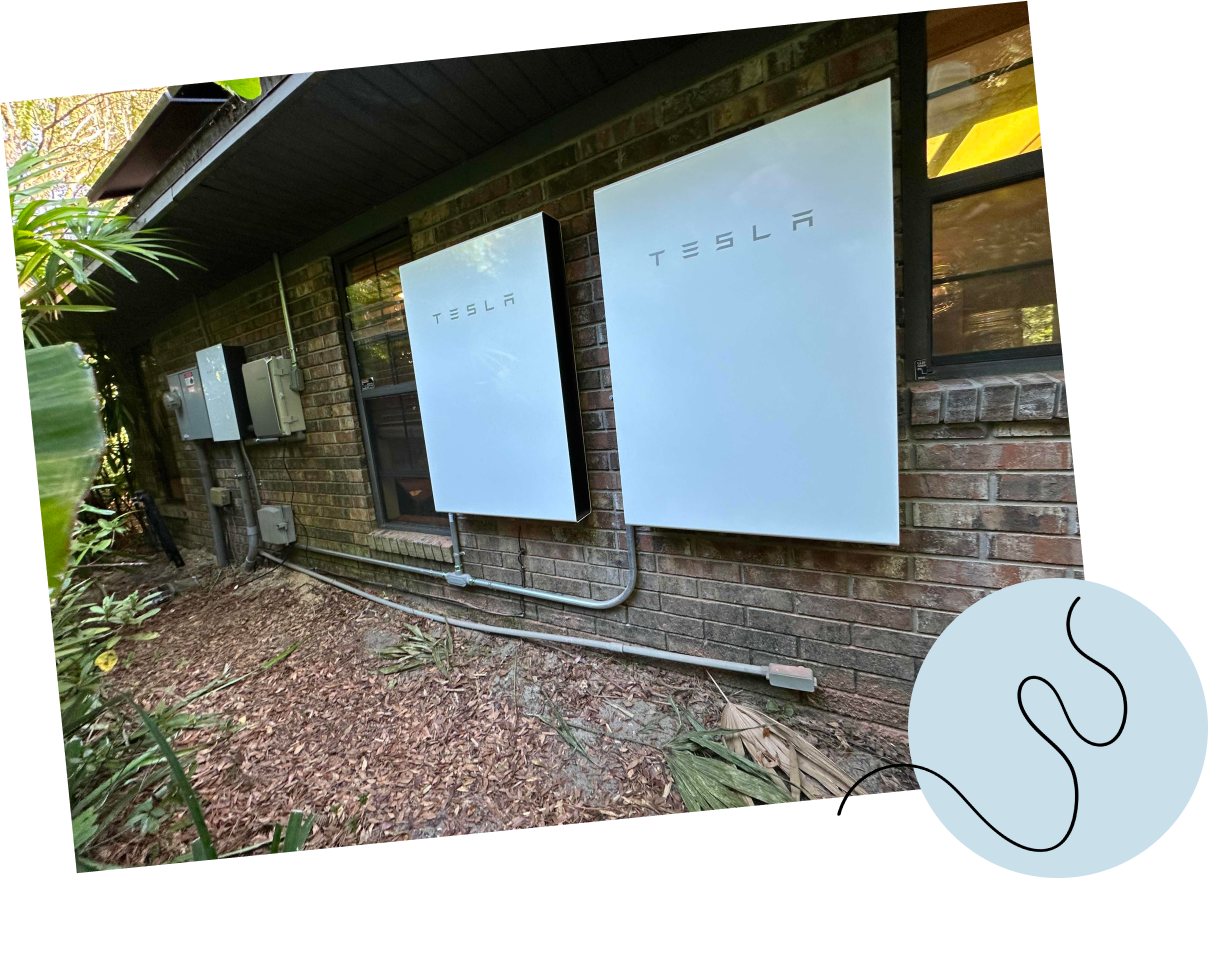
How does solar energy serve Gainesville homeowners?
Solar energy is hard at work for every solar homeowner in Gainesville every day as soon as the sun comes up (and even at night with energy storage). Solar energy is transformative in many ways and moves individuals, families, or businesses to become a part of the solution by reducing pollution and making a better choice for the planet.
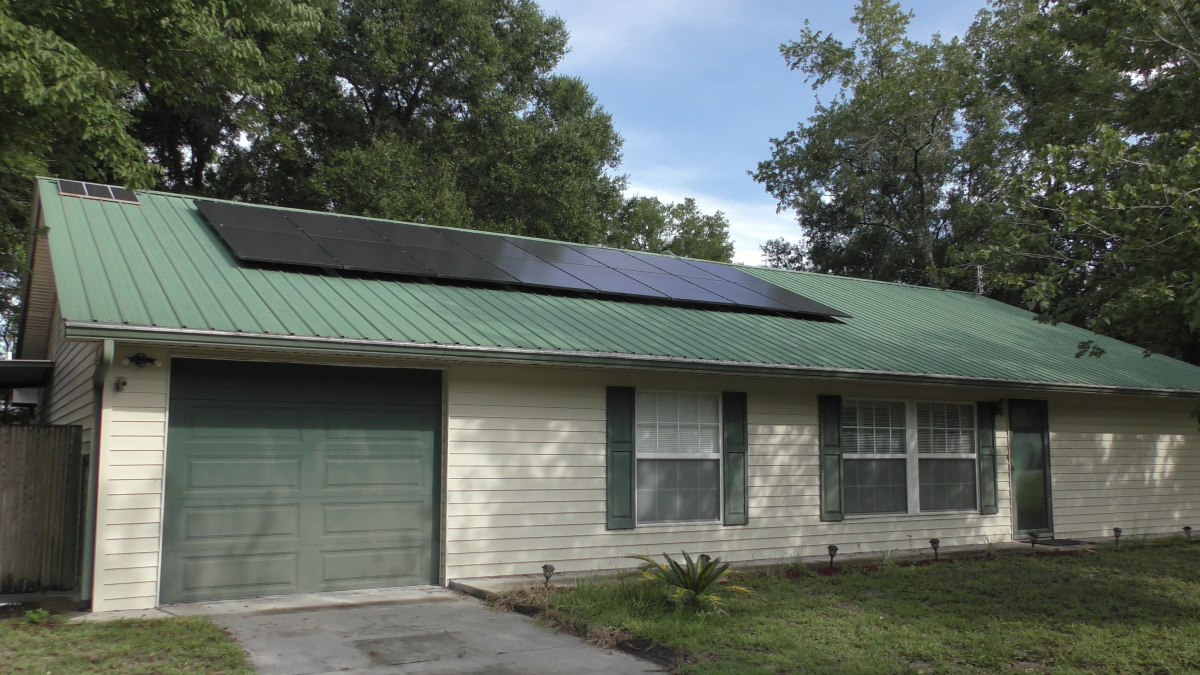
Explore our residential solar installation gallery in Gainesville






Find out what you can save with solar in Gainesville
Questions our customers ask us – answered!
You will put holes in my roof when installing solar panels. Will my roof leak?
We have performed over 50,000 roof penetrations over 15+ years and had less than 20 roof leak service calls that we immediately addressed. Those roof leaks after installing solar panels have resulted from earlier generations of roof penetration hardware and methodology that have since become more robust, resulting in an even lesser chance of ever having a roof leak event. Remember that we cover you with our ten-year workmanship warranty.
How does Net Metering work, and can I sell power back to my utility?
Net Metering availability and terms vary by utility. Investor-Owned Utilities (IOU’s) all offer net metering in the state of Florida. They include Duke Energy, FPL, TECO, and FPUC. Additionally several municipal utilities offer net metering process, but the terms may vary. PPM Solar operates a comprehensive rate schedule analysis tool that will take all of those variables into account and present an accurate solar offset rate schedule and the resulting payback calculation.
Yes, you can sell your power back to the utility, but not beyond what you would typically use on an annual basis. In other words, the solar system size is typically limited to match the consumption profile. However, excess energy generated on a daily and monthly basis is either purchased at the point of production or credited forward, and that is what the terms of the interconnection agreement will dictate. This makes solar system right-sizing that much more important because you cannot monetize excess energy at full rate, as you will not have the option to sell excess energy that you don’t use on an annual basis.
Can I use my solar panels when the grid is down?
Whether or not you can use your solar panels when the grid is down depends on whether your solar installation has batteries; if your solar panels are connected to a battery storage system, you can still access the electricity generated by your panels even when the grid is down. This is because the batteries store excess energy produced by the panels, allowing you to utilize it during power outages. However, suppose your solar panels are not connected to a battery storage system. In that case, you will not be able to use them when the grid is down since the electricity generated by the panels is directly fed into the grid and can cause damage or injury during repair by the utility company. The system will automatically turn off and come back on with the grid; no action is required by the homeowner.
There are newer technologies that allow EVs to be used for home backup, but very few are commercially available at this time. Additionally, the Enphase Sunlight system does allow solar panels to be used without batteries, but there are nuances to every situation; please contact us for full information.
How long does it take for a solar system to pay for itself?
Financed: The payback may be immediate if the solar payment approximately matches the utility bill, a so-called “Bill swapout.” In this case, the solar finance payment will remain the same, and the utility rates keep going up and up, resulting in ever-increasing monthly savings for the life of the solar system. It is not possible to estimate a payback on a cash-flow-positive asset, as technically, there was never an initial investment.
Cash Purchase: In the event that a 30% solar tax credit can be monetized, the net initial investment is 70% of the cost. The remaining amount is typically paid for within 6-9 years in a residential application and 2-5 years in a commercial one. It is important to recognize utility inflation as an important part of the ROI analysis. The cumulative nature of electric bills is often overlooked, and a person paying $250/month may not realize that they will pay $116,000 over 25 years under just 3.5% utility inflation or $143,000 with a 5% inflation rate. Solar offers a solution to a problem that we are very used to and is served to us in small doses, making it less noticeable; however, if addressed, solar carries a tremendous financial potential, and that doesn’t include the property value increase (without increasing the property tax), and other tangible and non-tangible benefits.
How many solar panels will I need? How is the solar system sized?
There are three main criteria to consider:
Consumption and consumption trends: Establishing consumption accurately can sometimes be challenging and requires careful consideration for the future. Will people be moving in or out of the home? Is purchasing an EV planned in the near future? Are you considering energy storage? Addressing these and many other questions is essential, in addition to evaluating historical usage.
Site Conditions: Based on the site-specific conditions, the efficiency of the solar panels will vary. Those conditions include The efficiency of the solar panels will vary based on site-specific conditions, including shading, azimuth, orientation, tilt, and other site considerations. It’s critical to ensure an accurate design to achieve all the project’s goals while avoiding oversizing due to the inability to monetize excess power.
Utility considerations and maximizing the payback:
The energy use profile and self-consumption frequently influence the feasibility and ROI, requiring consideration when sizing a system. PPM has advanced tools designed to solve this problem and tweak the sizing to achieve the best financial/production/autonomy ratio for the project.
